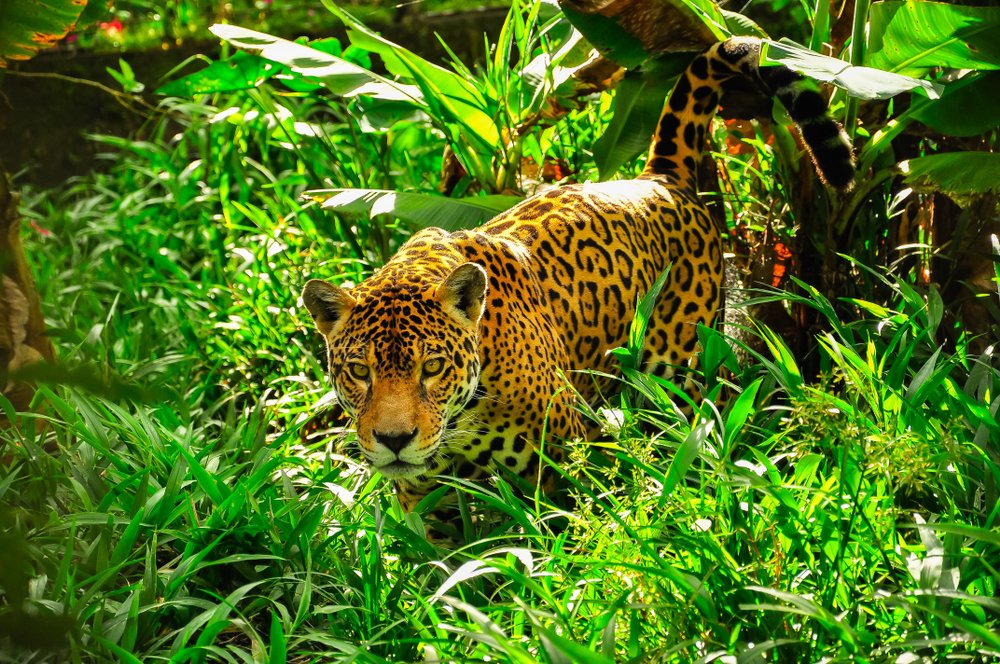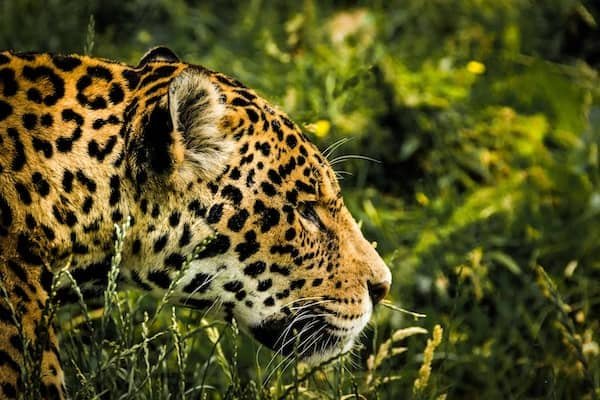Have you ever wondered how fast can jaguars run? The answer to this question largely depends on the specific jaguar in question, as there can be some variation in speed among individual animals. Generally speaking, however, jaguars are thought to be able to reach speeds of up to 60 miles per hour (mph) when running in short bursts. This makes them one of the fastest land animals on the planet!
Interestingly, jaguars are not only fast runners but are also excellent swimmers. They have been known to swim long distances and even catch fish in rivers and lakes.
Table of Contents
How Fast Can Jaguars Run? What Makes jaguars so fast?

So, how do jaguars manage to move so quickly? Well, a big part of it has to do with their muscular build and powerful legs. Jaguars are also very agile, which helps them to make quick turns and avoid obstacles while they are running at high speeds.
If you ever find yourself in the presence of a jaguar, it is probably best to not try to outrun it! Instead, try to give the animal some space and slowly back away from the situation.
Combat Skills of a Jaguar

Jaguars are among the most feared animals in the wild due to their impressive size and strength. They are known to be very aggressive and have been known to attack humans on occasion.
While they typically avoid confrontation with people, jaguars will attack if they feel threatened or if they are trying to protect their territory. When a jaguar does attack, it can be a very dangerous situation.
These animals are built for combat, with powerful jaws and sharp claws that can cause serious injuries. Jaguars also tend to go for the throat when they attack, which can quickly lead to death.
In short, it is best to admire jaguars from a distance and avoid getting too close to these powerful predators!
Physical Features of a Jaguar

- The jaguar is a big cat found in the Americas. The jaguar’s fur is usually orange with black spots, but it can also be tan or black. Jaguars have long tails and short legs. They live in rain forests, swamps, and woodlands.
- Jaguars are the largest cats in the Western Hemisphere. They weigh between 100 and 200 pounds (45 to 90 kilograms). They are about 4 to 6 feet (1.2 to 1.8 meters) long, not counting their tail, which may be another 3 feet (0.9 meter) long. Male jaguars are larger than females.
- Jaguars are carnivores. That means they hunt and eat other animals. Deer, pigs, and cattle are their favorite prey, but they will also eat rodents, reptiles, birds, and fish. Jaguars sometimes kill more prey than they can eat and will store the extra food in trees or under bushes for later.
- Like all cats, jaguars have sharp claws and teeth. They use their claws for climbing and for killing their prey. Their teeth are good for slicing meat.
- Jaguars have very good night vision and can see six times better than humans in low light conditions. They also have a keen sense of smell.
- In the wild, jaguars can live up to 20 years old. In captivity, they may live even longer.
Adaptations for Speed:
Jaguars’ remarkable speed is a result of a number of physical adaptations they have developed throughout time. Their strong, muscular physique are ideal for sudden, high-speed acceleration.
In addition, they can effectively traverse a variety of terrains because to their big, strong paws. Jaguars are incredibly skilled at both swimming and climbing trees, demonstrating their flexibility to a variety of situations.
Read Also: How High Can A Mountain Lion Jump?





